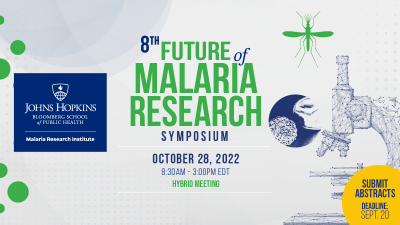Presentation Abstracts
Thanks for visiting our poster or booth! Interested in reading more about our research? Download or take a screenshot of our abstracts below, along with our most recent algorithm performance results.
Inclusion of critical malaria vectors in IDX algorithms, an imaging and identification device to support routine vector surveillance.
Authors: Adam Goodwin, Jewell Brey, Sanket Padmanabhan, Ghnana Madenini, Sameerah Talafha, Tristan Ford, Roy Faiman.
Vector surveillance is critical to integrated vector management. However, identification is time consuming and requires significant expertise. A high training burden and the use of seasonal staff often result in variable accuracy and speed. For malaria elimination efforts, as secondary vectors emerge as increasingly important epidemiologically, specimen identification becomes both more difficult and important. To address these gaps, Vectech is developing IDX, a versatile tool for the imaging and identification of mosquitoes. Development of mosquito species identification has continued to include 23 species, achieving 94% macro-averaged F1 score including Aedes aegypti (96.8%), Ae albopictus (95.9%), Anopheles albimanus (99.9%), An gambiae sl (97.2%), and An stephensi sl (100%). Development to include An funestus sl and various secondary vectors is underway. 12 IDX devices have been distributed to early partners who aid in gathering image data and algorithm assessment.
LB-5401 - Advancement of computer vision methods for identification of mosquito and tick vector species
Author Block: Adam Goodwin1, Roy Faiman1, Jewell Brey1, Sanket Padmanabhan1, Ghnana Madineni1, Margaret Glancey1, Yvonne Linton2, Nicole Achee3, John Grieco3, Le Jiang4, Tristan Ford1 1Vectech, Baltimore, MD, United States, 2Walter Reed Biosystematics Unit, Suitland, MD, United States, 3Notre Dame, South Bend, IN, United States, 4Naval Medical Research Center, Silver Spring, MD, United States
The evolving dynamics of mosquito- and tick-borne diseases as a result of climate change, globalization, and vector and pathogen response to interventions has implicated an urgent recognized need for improved surveillance operations. Current methods for collecting and identifying specimens are not scalable for multiple reasons. One of the many challenges is morphological identification - an essential step to understand the risk of possible disease. Several technical modalities have been explored for their potential to improve data accuracy, quality, and accessibility of identification in surveillance workflows. Convolutional neural networks (CNNs) for image recognition, a deep learning method, have been among the most promising, demonstrating the capability to visually differentiate between species with limited datasets, with highest accuracy achieved in controlled optical scenarios. Our team has further developed these algorithms for practical use in IDX, a standardized optical device designed for operational vector surveillance. This includes controls for image variation observed in assembly or component manufacturing while scaling across several devices, and the ability to determine if a specimen’s species is unknown to the system. Current mosquito species classification accuracy on data from a single device achieves 98.3 +- 0.7% over 17 species. On average the system performs with an accuracy of 97.7% across seven Aedes species, 92.9% across five Culex species and 100% across two Anopheles species commonly found in the United States. Current tick species classification accuracy on data from a single device achieves 98.8% over 10 species. These advancements have enabled the practical deployment of several devices for beta testing in operational vector surveillance this year. In the next phase of this work, the system will be trained to recognize major malaria vector species with domestic and global partners.
An AI based imaging and identification tool for Diverse Vector Identification
Authors: Roy Faiman, Jewell Brey, Sanket Padmanabhan, Bala Murali Manoghar Sai Sudhakar, Ghnana Madineni, Tristan Ford, Adam Goodwin | Vectech, LLC
Vector surveillance is key to assessing vector-borne disease risk management. Morphological identification of specimens by experts remains the gold standard for vector identification. Yet, only few vector management organizations have the resources for full-time medical entomologists to conduct routine identification. Many organizations rely on seasonal staff with minimal taxonomic expertise to guide important downstream intervention strategies and policy.
Applied deep learning convolutional neural networks (CNNs) for image recognition have been among the most promising technical modalities for visually differentiating between mosquito species. Parallel development includes the algorithmic ability to determine if a specimen’s species is unknown to the system. We developed these algorithms for IDX, a digital imaging system with species identification capabilities where the user images specimens and the species identification is displayed on a web dashboard within seconds. Species classification accuracy achieves 98.3 ± 0.7% over 17 mosquito species. An unknown species detection algorithm achieved a 92.7% F1-score in detecting whether a specimen was of a species known to the CNN or not for mosquito species classification.
IDX bridges the gap in vector surveillance information by equipping users with the identification capabilities of a professional entomologist and creating a standardized digital record of each specimen. Ten US organizations are currently testing IDX in the field with the goal of increasing species identification to all vectors, including ticks, both domestic and abroad.




